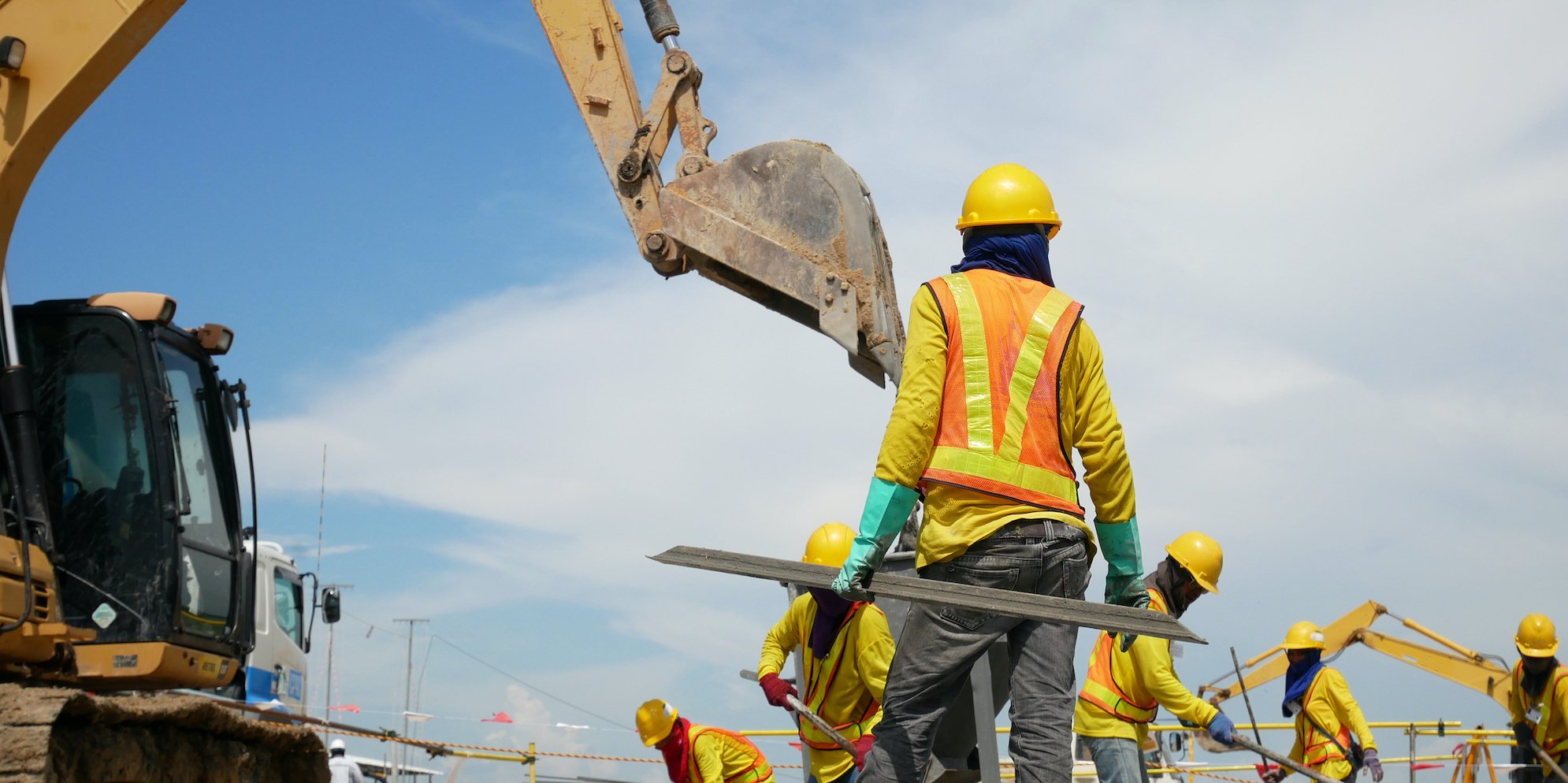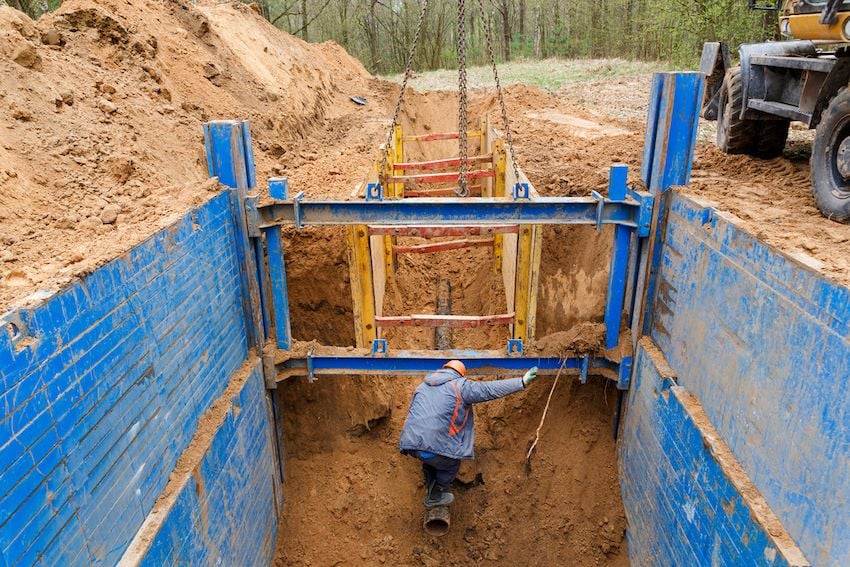According to the Bureau of Labor Statistics (BLS), falls, slips, and trips are the second-leading cause of worker fatalities in all industries and the leading cause of death in the construction industry. In 2020, 368 construction workers died after suffering a fall on the job, according to the BLS.
The grim statistics may lead you to believe fatal falls are inevitable in construction, but the truth is they are largely preventable. Here, we review guidelines established by the Occupational Health and Safety Administration (OSHA) to minimize construction falls.
3 ways to prevent fatal falls in construction
1. Be informed about fall protection requirements
OSHA’s Subpart M outlines the requirements and criteria for fall protection in construction workplaces. For example, this standard applies when workers are at heights of 6 feet or more above a lower level. It also covers protecting workers from falling objects, falls from tripping over or falling through holes, and protection when walking and working in the vicinity of dangerous equipment—without regard for height.
Different job sites require different types of fall protection requirements. OSHA urges employers to choose systems designed to prevent any type of falls that could happen on the construction site.
Below are a few examples of fall protection requirements for common construction activities.
- Leading edges: OSHA requires all workers—a few exceptions apply—constructing a leading edge 6 feet or more above a lower level to be protected by guardrail systems, safety net systems, or personal fall arrest systems.
- Overhand bricklaying and related work: To prevent construction fatalities, workers performing overhand bricklaying and related work 6 feet or more above a lower level must be protected by guardrail systems, safety net systems, or personal fall arrest systems. Alternatively, they can also work in a controlled access zone.
- Roofing work on low-slope roofs: When working on a low-slope roof—i.e., a slope less than or equal to 4 in 12 vertical to horizontal—with one or more unprotected sides or edges 6 feet or more above lower levels, workers must be protected by guardrail systems, safety net systems, personal fall arrest systems, a combination of conventional fall protection systems and warning line systems, or a warning line system and a safety monitoring system.
- Working on steep roofs: Construction workers performing work on a steep roof—i.e., 4 in 12 vertical to horizontal—with one or more unprotected side or edge 6 feet or more above lower levels must be protected by guardrail systems with toeboards, safety net systems, or personal fall arrest systems.
- Residential construction: Workers performing residential construction activities 6 feet or more above lower levels must be protected by conventional fall protection equipment—i.e., guardrail systems, safety net systems, or personal fall arrest systems—unless an exception calls for a different fall protection measure.
- Other walking or working surfaces: Generally speaking, every worker on a walking or working surface 6 feet or more above a lower level must be protected from falling by a guardrail system, a safety net system, or a personal fall arrest system.
Related: 5 Insights from the Health and Safety Leaders Roundtable
2. Invest in quality fall protection systems
Conventional fall protection systems were mentioned frequently above. Here’s an overview of the types of fall protection systems most commonly used for construction workers’ safety.
- Guardrail systems: Barriers built to prevent construction falls to lower levels, guardrail systems can save lives. Specific requirements vary by construction site, so check the OSHA standards before erecting one at your location.
- Safety net systems: If installed properly, safety net systems can save a life by preventing a falling person from hitting the surface or structure below the net. This means mounting them as close as possible under the walking or working surface that workers are on, but never more than 30 feet below that level.
- Personal fall arrest systems: Used to safely stop a person falling from a working level, personal fall arrest systems are composed of an anchorage, connectors, and a body harness—at minimum. The type of body harness needed depends on the specifics of the project, meaning there’s no one-size-fits-all approach.
- Positioning device systems: A body belt or body harness system rigged to support a worker on an elevated vertical surface—i.e., a wall—a positioning device system allows them to do their job with both hands free while leaning.
- Fall restraint systems: They’re not mentioned in Subpart M, but fall restraint systems are recognized by OSHA as a way to prevent construction falls. When used properly, the system will tether a worker in a manner that prevents falls of any distance.
If you feel like none of these fall protection systems are right for your job, OSHA also offers guidelines on warning line systems, controlled access zones, and safety monitoring systems.
Look: Top Environmental Health and Safety Technologies for 2022
3. Require all workers to complete fall protection training
You know the answer to questions like “What is the OSHA height requirement for fall protection?”, but that doesn’t mean the workers on your team share this knowledge. OSHA requires employers to provide workers who might be exposed to fall hazards with a fall protection training program.
Designed to prevent fatal falls in construction, training must cover both how to recognize fall hazards and how to minimize them. OSHA requires each worker to be trained as needed by someone who has been trained in several specific areas, so consult the guidelines before assigning someone to this job.
Also see: Create a Safety-First Culture to Prevent Worker Safety Incidents
Fatal falls in construction happen far too often. Taking the time to review these guidelines is the first step toward making meaningful changes that can save lives.
For more on preventing serious injuries and fatalities in construction, see the blog “7 Deadly Utility Construction Hazards and How to Temper Them.”

